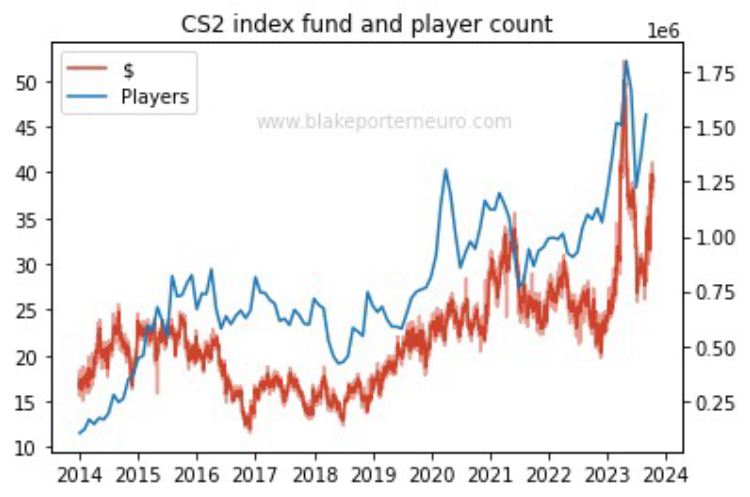Hookup Doc: Your Go-To Guide for All Things Dating
Explore the latest trends, tips, and advice in the world of dating and relationships.
The Skin Game: Navigating Economic Insights in the CS2 Environment
Unlock the secrets of CS2's economic landscape! Explore key insights and strategies in The Skin Game for savvy players and traders.
Understanding the Economic Dynamics of CS2: Key Factors Affecting the Market
The economic dynamics of CS2 (Counter-Strike 2) are influenced by various factors that shape both the in-game economy and its market outside the game. Player engagement is one of the primary drivers, as it directly impacts demand for skins, weapons, and other in-game items. As more players enter the franchise and increases in player engagement are witnessed, the perceived value of these items typically rises. Furthermore, factors such as game updates, seasonal events, and community involvement play significant roles in shaping player sentiment and, by extension, market behavior. The cyclical nature of these elements often results in fluctuating prices for in-game assets, making it crucial for players and investors to stay informed.
Another essential component affecting the CS2 market is scarcity. Limited edition items and skins that are no longer available generate a sense of exclusivity, leading to increased demand among collectors. Market trends can also be heavily influenced by the introduction of new skins, the popularity of professional matchmaking, and streamer influence, which can create spikes in interest. It's important for players and investors to analyze these trends meticulously and consider factors such as RMT (Real Money Trading) practices, as they complicate the traditional supply and demand principles by introducing real-world monetary value into the mix. Understanding these key factors is vital for anyone looking to navigate the exciting yet volatile world of CS2's economic landscape.

Counter-Strike has long been a staple in the world of competitive gaming, with its engaging gameplay and tactical depth. Recently, players have been discussing the impact of the market cap crash cs2 on the community, especially in relation to the game's economy.
How to Maximize Your Profitability in CS2: Strategies for Success
Maximizing your profitability in CS2 requires a strategic approach that balances skill development, resource management, and in-game decision-making. One effective strategy is to focus on improving your individual performance through practice and analysis. Consider setting aside dedicated time for aim training and studying your gameplay to identify areas for improvement. Additionally, collaborating with other players can enhance your skills; joining a team or participating in community events not only sharpens your abilities but also expands your network, which can lead to lucrative opportunities.
Another essential tactic is to understand the market trends within CS2, particularly regarding in-game items and skins. Keeping an eye on demand and supply dynamics can help you identify profitable trading opportunities. Utilize platforms that allow you to buy, sell, or trade items efficiently, and ensure you're aware of the latest developments and updates in the game. Remember to diversify your investments—do not put all your resources into a single item or strategy. By combining skill enhancement with savvy market strategies, you can significantly boost your profitability in CS2.
What Are the Current Trends in CS2 Economics and How Do They Impact Players?
The economic landscape of CS2 (Counter-Strike 2) is continuously evolving, influenced by several key trends that shape player experiences and strategies. One of the most notable trends is the growing importance of skins and virtual items, which have transformed from simple cosmetics into significant economic assets. Players now actively engage in buying, selling, and trading these items, leading to an intricate market dynamics that mirrors real-world economics. According to recent reports, the overall value of CS2 skins has surged, with rare items fetching extraordinarily high prices, thus reflecting a robust demand driven by player engagement and collector interest.
Additionally, the introduction of new game modes and promotional events has further impacted CS2 economics. Seasonal events often bring unique in-game items and limited-time offers that create urgency among players, resulting in temporary spikes in the market. The concept of dynamic pricing for in-game items, influenced by player supply and demand, has become particularly relevant. Players must stay informed about these trends to maximize their engagement and investment in the game. Understanding these current economic trends is crucial for players seeking to navigate the ever-changing landscape of CS2.